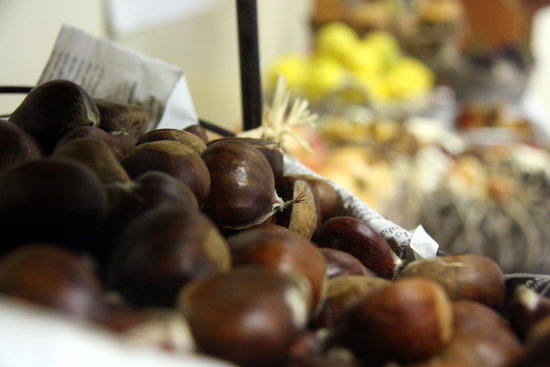October 31: Halloween or Castanyada?
In Catalonia, this date that leaves no one indifferent brings two events which are not only different – they’re in a bit of a competition

Those in Catalonia will have noticed the swift change of weather: it’s definitely autumn. And, in Barcelona, those walking the streets in the crisp fall air will have noticed two new seasonal additions in the streets: roasted chestnut stands, complete with sweet potatoes, and, Halloween decorations and costumes in shops.
These two newcomers represent the Catalan ‘castanyada’ and the modern iteration of All Hallows Eve, and they could not be more different. Except, that is, they fall on the same day: October 31.
This coincidence has led to an interesting phenomenon in the last few years in Catalonia. As Anglophone culture becomes more present, here, due to everything from globalization to tourism, so do its holidays. In the case of Halloween, the spooky holiday manifests itself in the guise of not only decorations, but also themed candy in the grocery stores, bolstered costume sections, and, of course, drunken and costumed revelry.
The Catalan ‘Castanyada’ draws its name from the very seasonal roasted delicacy that star in the autumnal feast. And it not only revolves around the food, but around the concept of family and friends. This get-together as the weather gets colder sees a meal, accompanied by a dry wine, where chestnuts are eaten alongside sweet potatoes and marzipan cakes called ‘panellets’ – the most common made with pine nuts, but with all sorts of ingredients.
And if it weren’t enough that the two compete between the concept of wholesome and horror, it’s also a tug of war between tradition and modernity. A lecturer from the Open University of Catalonia, Francesc Nuñez, explained that the two are “both very strong.”
Nuñez detailed that there’s “the unease or the fear that [Catalan] traditions be absorbed, that they disappear into other foreign traditions.” There’s a danger of this, the lecturer added, because “in a globalized world,” where “lifestyles and ways to behave” are being “imposed,” it’s evident that this concern exists for “minority cultures.”
When asked why Halloween has gained such popularity in recent times, he offered that it’s “becoming incorporated with such strength in Catalonia for mainly two reasons.” The first, he expressed, was “because it’s fun, it’s attractive, young people like celebrating it.” On the other hand, he said, “there’s strong commercial pressure.” After all, he resumed, “it’s still many products that are being sold, another mechanism for consuming.”
Nuñez also touched on one of the more contentious issues: schools. Educational centers “are celebrating Halloween with a lot of enthusiasm,” he explained. And for some parents, especially, those concerned with keeping this tradition alive, this is not so innocuous.
And while it may be impossible to keep Halloween out now that it’s made its way into Catalonia, for those who prefer tradition over trick or treating, the ‘Castanyada’ is always there. And who knows – maybe the ‘castanyada’ table even has room for a pumpkin or two.